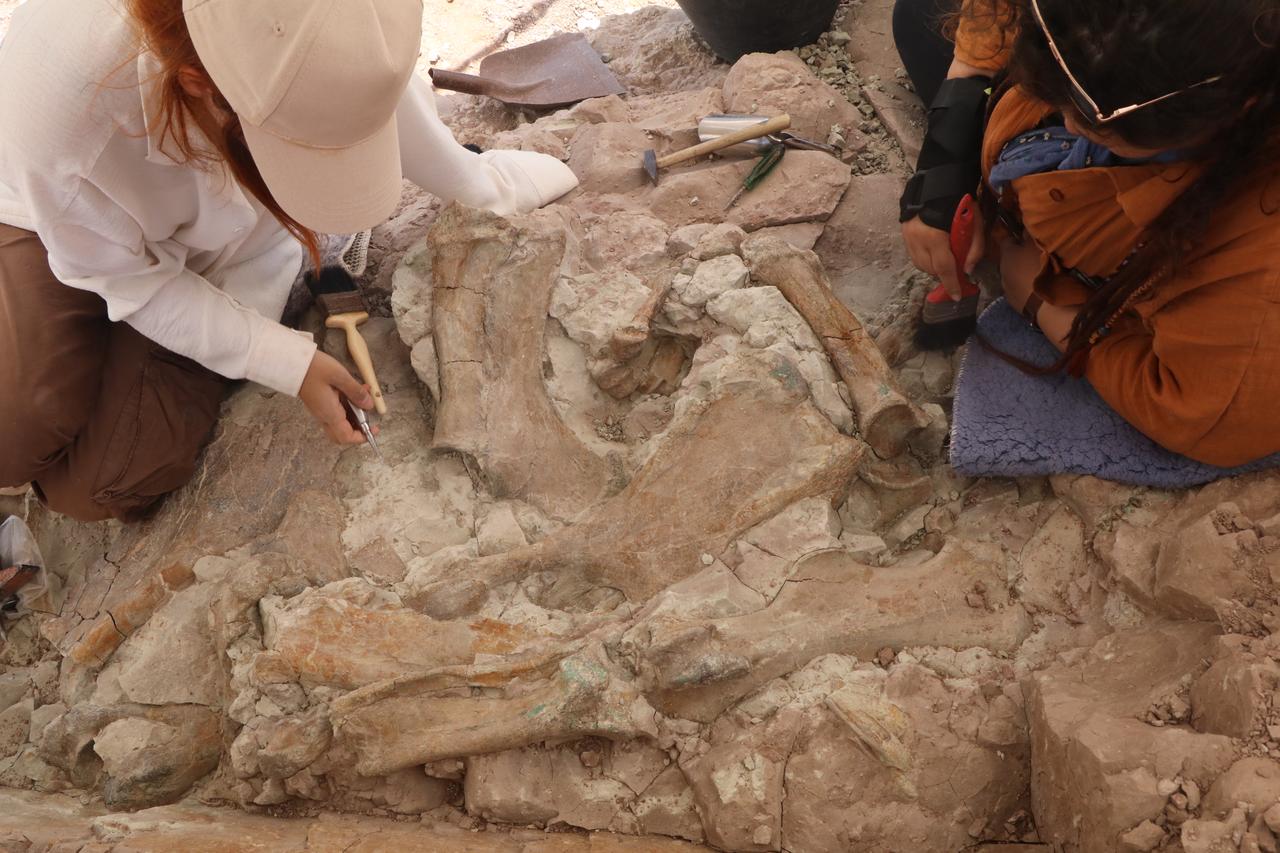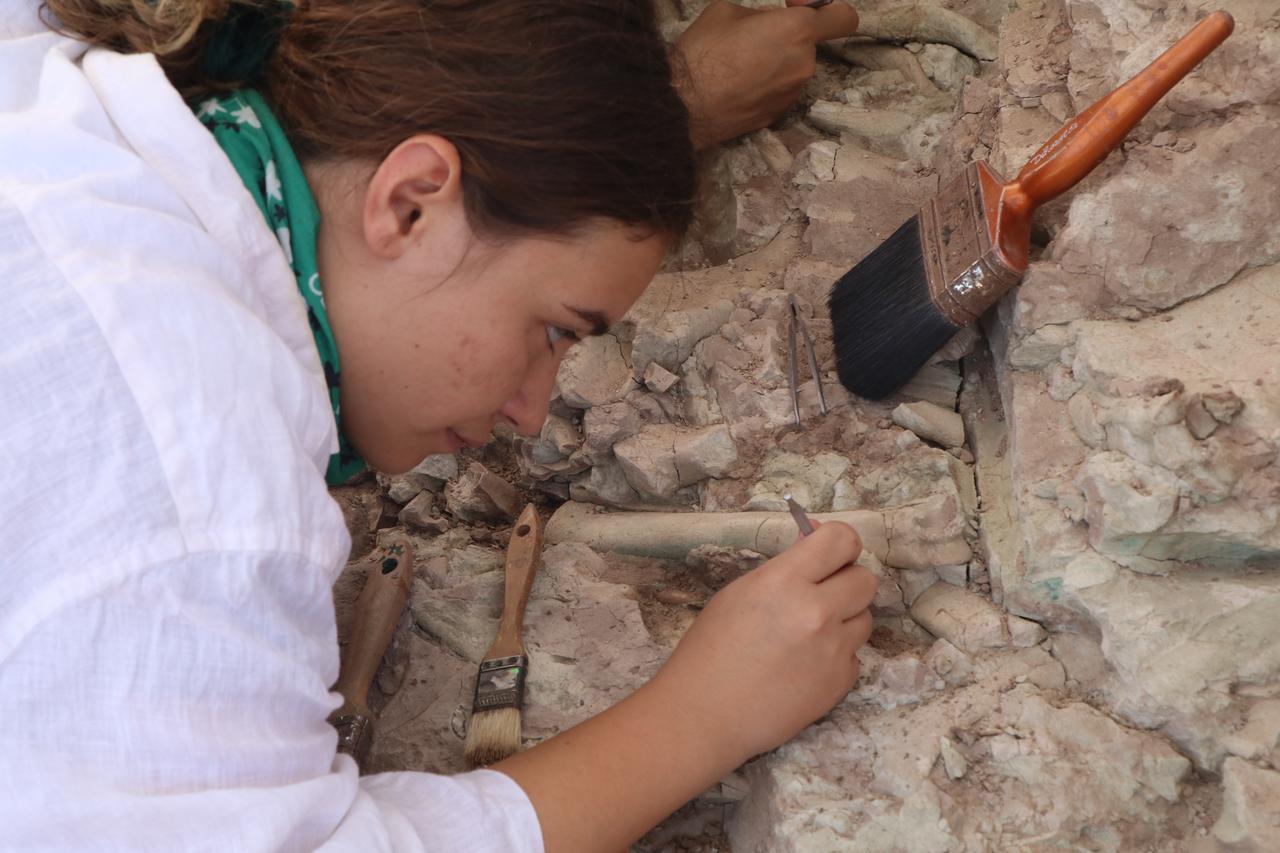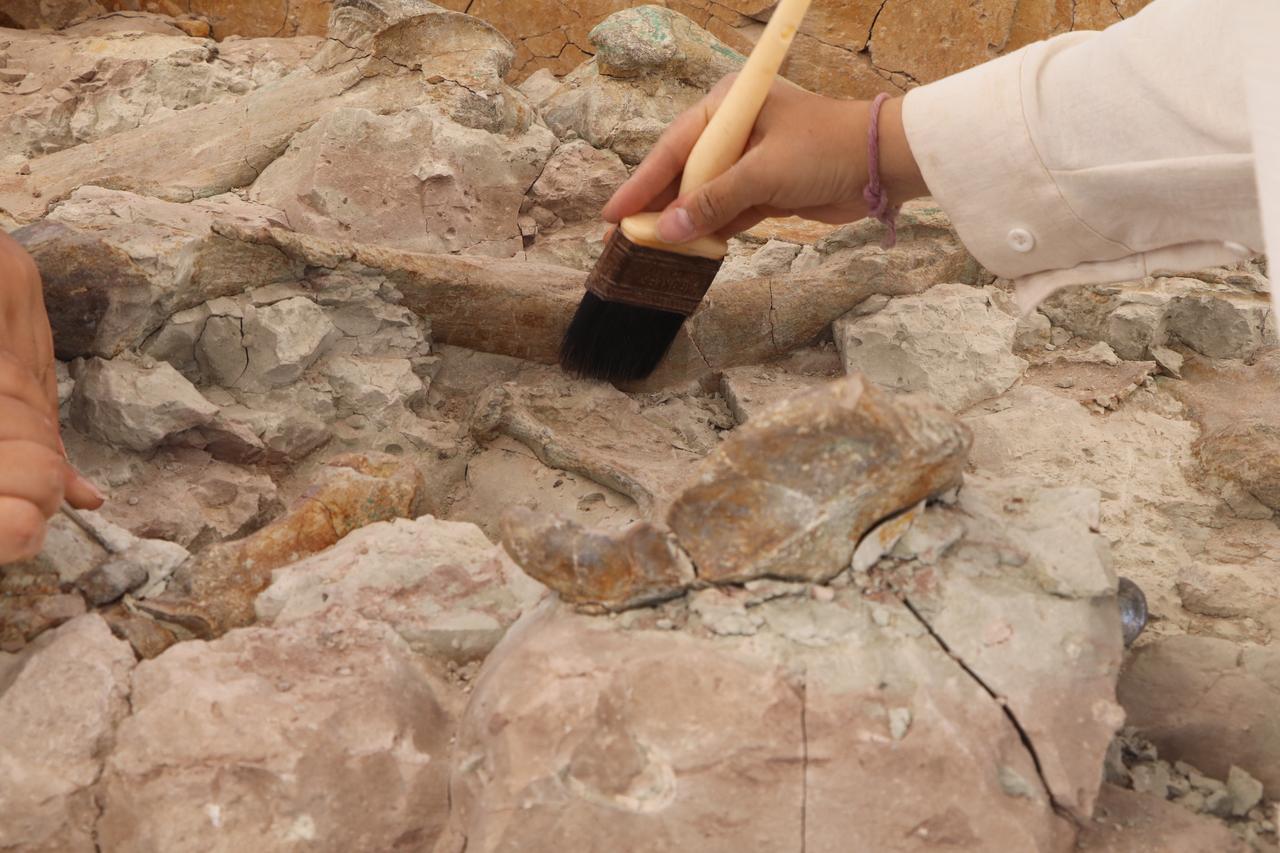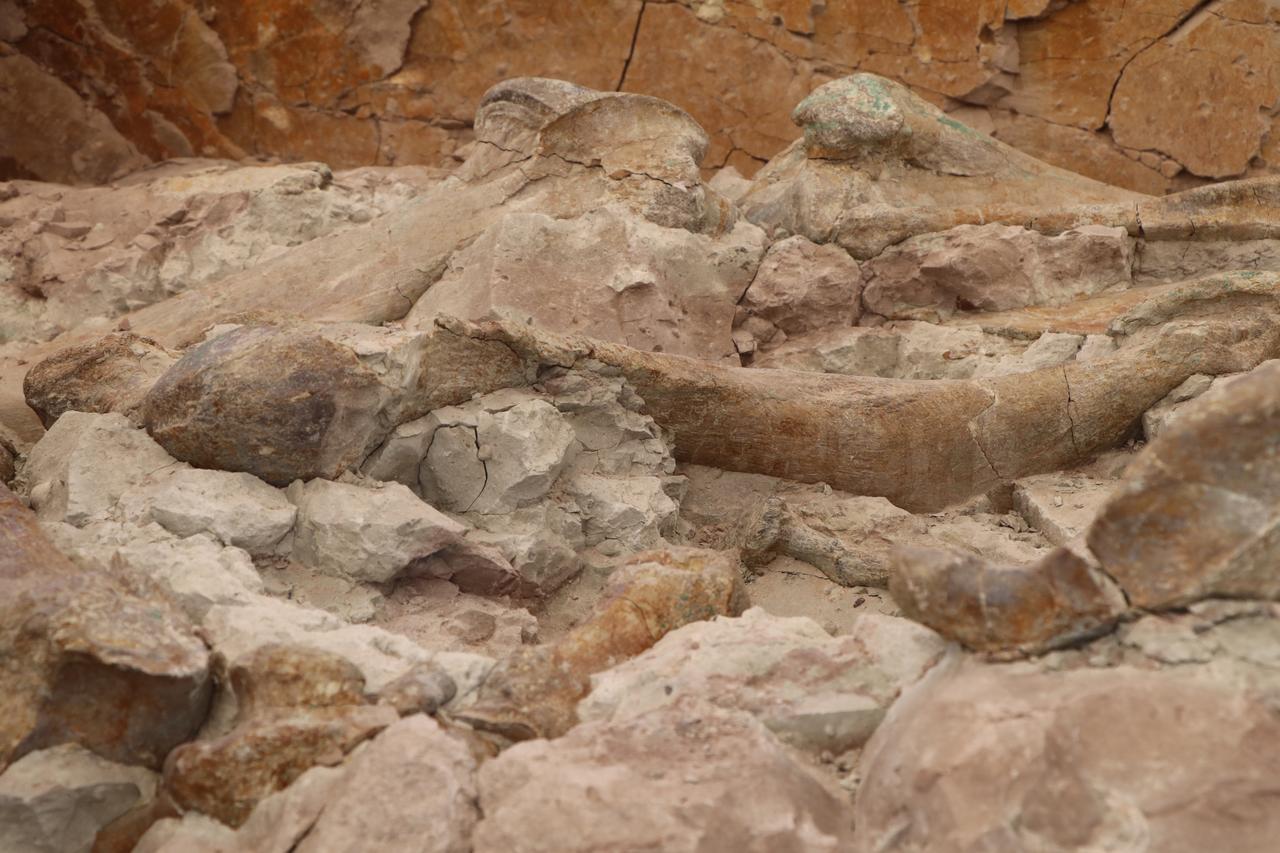
In a rare discovery in central Türkiye, archaeologists working at the Corakyerler Vertebrate Fossil Locality near Cankiri have uncovered a dense fossil cluster containing bones from at least seven or eight large mammals, including elephants, rhinos, and giraffes that lived approximately nine million years ago.
Led by Professor Ayla Sevim Erol of Ankara University's Faculty of Language, History and Geography, the excavation is being carried out by a 15-member team along the Cankiri-Yaprakli highway. The site has long been considered one of Türkiye’s key reference localities for vertebrate fossils.

This season’s most striking find emerged from a mere two-square-meter area, where over 20 articulated bones belonging to multiple large herbivores were found tightly packed together. According to Gulsah Guler, the assistant excavation director, these fossils include a mixture of skeletal parts from elephants, rhinos, and giraffes.
While previous seasons at the site mostly yielded isolated bones, this year’s excavations revealed bones still in their original anatomical positions—a rare occurrence in paleontology. "In earlier digs, we usually came across single bones, but this year we are finding well-preserved, articulated skeletons belonging to multiple large mammals in the same context," Guler said.

Researchers believe the animals did not die together naturally but were swept into the same spot by a powerful mudflow that likely followed a catastrophic event. This natural process, Guler explained, may have preserved the bones with minimal damage. “A mudflow brought the animals together and buried them here. That’s why we find them so closely packed and in such good condition,” she said.
Among the fossils, researchers identified an elephant’s humerus, tarso-metatarsal bones from two different rhino species, and a giraffe’s upper jaw—alongside other skeletal elements from the same or similar animals. “If we count the individual joints, there are over 20 bones, but in terms of individuals, we estimate remains from about seven or eight animals,” Guler noted.

The Corakyerler site is dated to between seven and nine million years ago, a period known as the Late Miocene. Over the years, researchers have catalogued more than 4,300 specimens from 43 distinct mammal species at the site. These include ancestral species of horses, elephants, giraffes, saber-toothed cats, otters, porcupines, bears, and pigs.
All the recovered specimens are from terrestrial mammals, and the range of species has helped make Corakyerler one of the most informative fossil localities in the region. The newly discovered cluster of large, articulated fossils adds another layer to this understanding, offering insight into the paleoenvironment and the catastrophic events that helped preserve such a diverse group.

What sets this discovery apart is not only the diversity of species represented but also the preservation quality. Guler highlighted the unusual state of the fossils, pointing out that, unlike many fossil beds in Türkiye where bones are often transported and fragmented over time, this site yielded fossils in excellent condition. “They are all intact, without any crushing or distortion,” she said. “That’s extremely valuable for systematic analysis.”
The excavation continues to shed light on the ancient ecosystem of Anatolia and is expected to contribute significantly to global paleontological research.